Wooden Statues of St. John the Baptist and St. John the Evangelist
Artist: Unknown
Date: Early 20th century
Classification: Statues
Dimensions: Height 160 cm
Materials: Wood (maybe pine) painted in tempera
Adopted By: The Florida Chapter
Description
MEDIUM PRIORITY PROJECT
The polychrome wood statues represent Saint John the Baptist and Saint John the Evangelist. They are now found in the Museums, but they came from the Tower of Saint John, a building of medieval origin located in the Vatican Gardens. The two sculptures are slightly less than the real height (about 160 cm each). They were on exhibition as furnishing elements inside the so-called “pope’s reception studio” located on the second floor. The statues were more than likely there since the early Sixties of the 20th century or when Pope St. John XXIII completely renovated the ancient medieval tower. St. John the Evangelist holds an open book and a goose feather. Saint John the Baptist, on the other hand, has the baptismal shell in his right hand, while the removable cross rests on his left arm, and he displays a delicate hand gesture. Also, a golden trickle of water from the Jordan flows from the suppedaneum in the center. Both figures have an elegant and thin halo in gilded metal, fixed with a pin on the back of the head, and the Baptist’s cross is gilded metal.
TOTAL COST: € 24.626,70 ($ 24,070.14)
Restoration Procedures
-
Anoxic treatment
-
Restoration and consolidation of the support
-
Wooden wedges to fix the cracks and provide better adhesion
-
Chromatic treatment of the wooden dowels
Detail
Inventory N°: 44910, 44911
Artist: Unknown
Date: Early 20th century
Dimensions: Height 160 cm
Materials: Wood (maybe pine) painted in tempera
Wishbook year: 2023
Wooden Statues of St. John the Baptist and St. John the Evangelist - Final Restoration Report
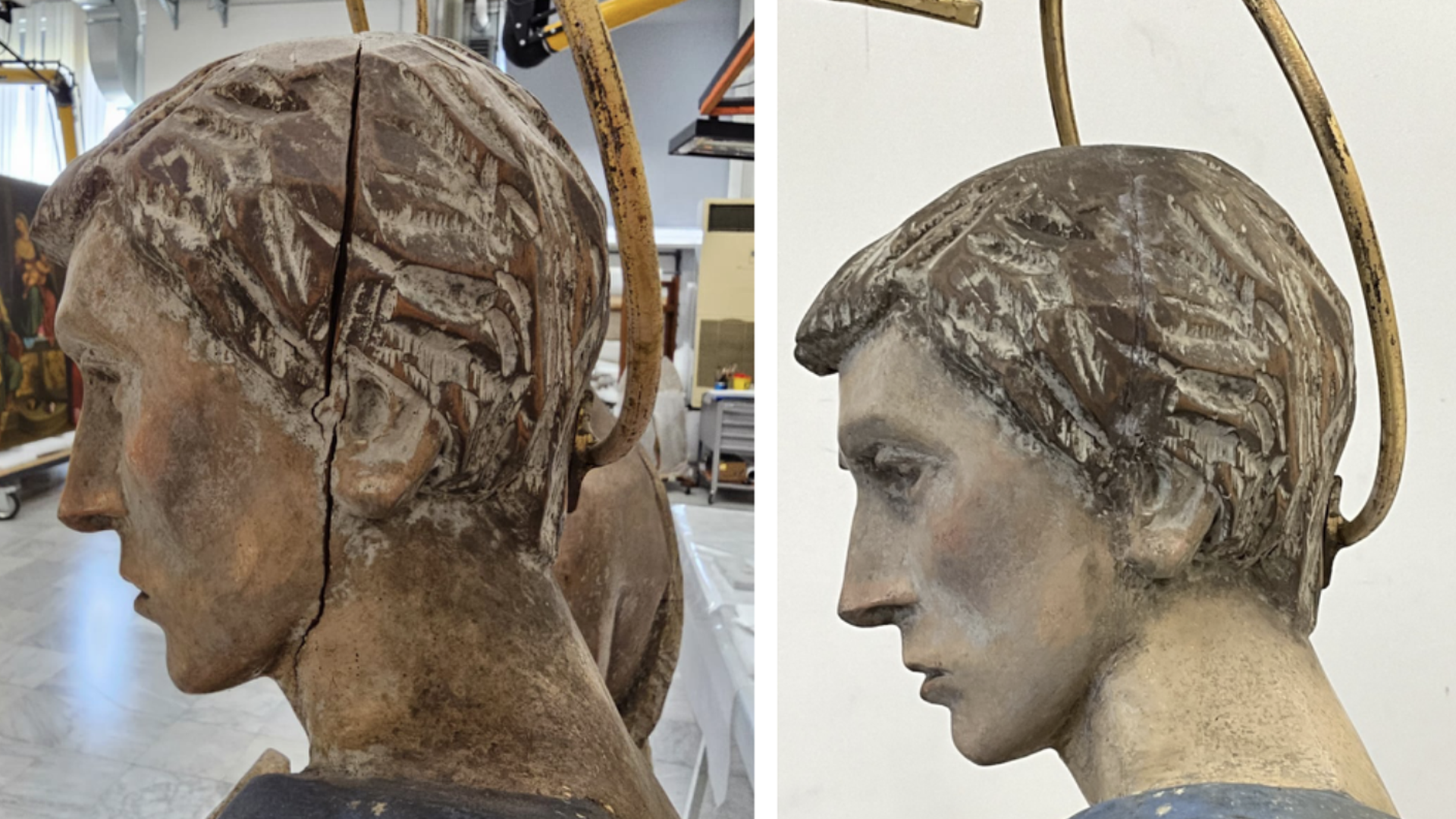
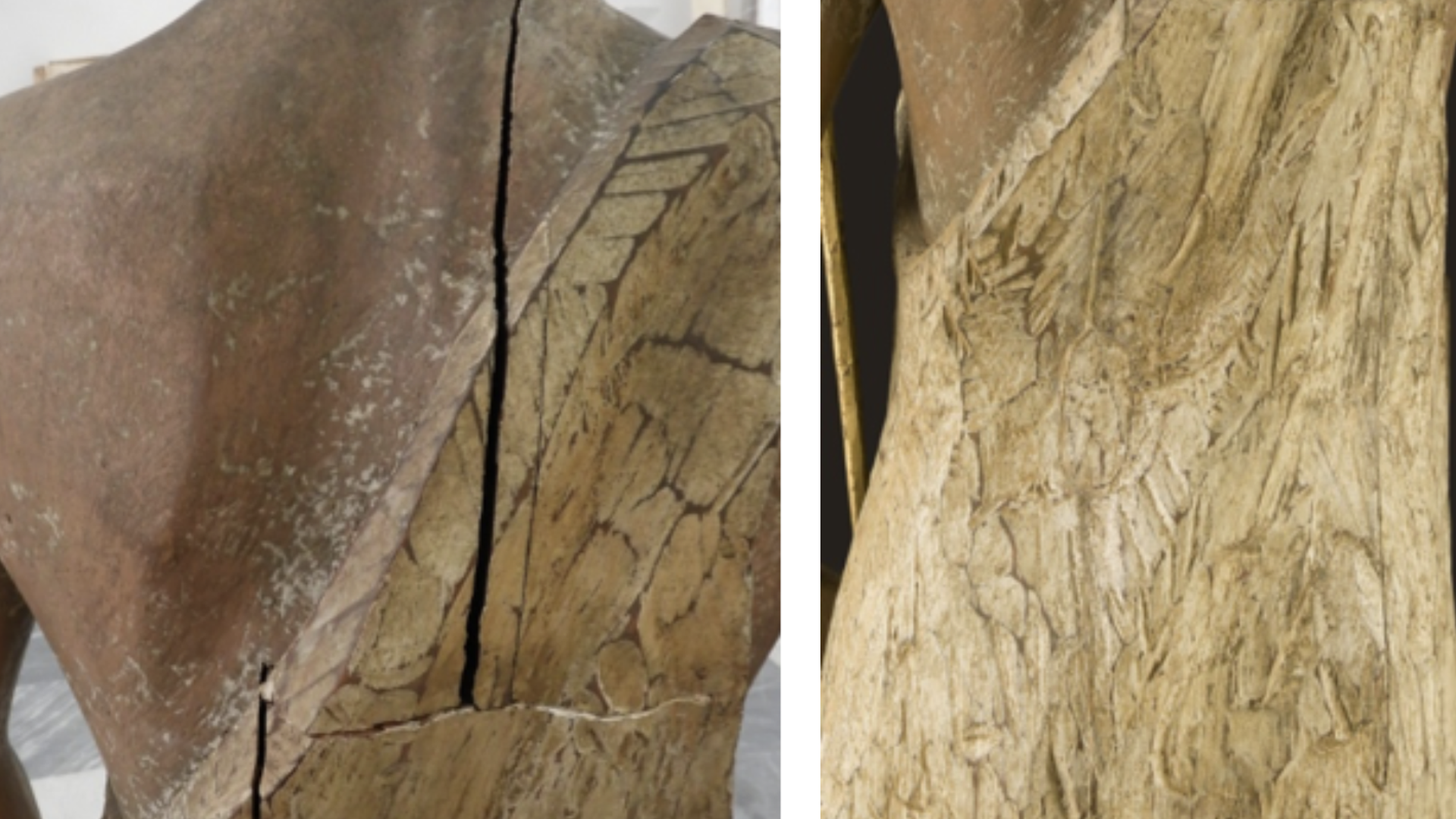
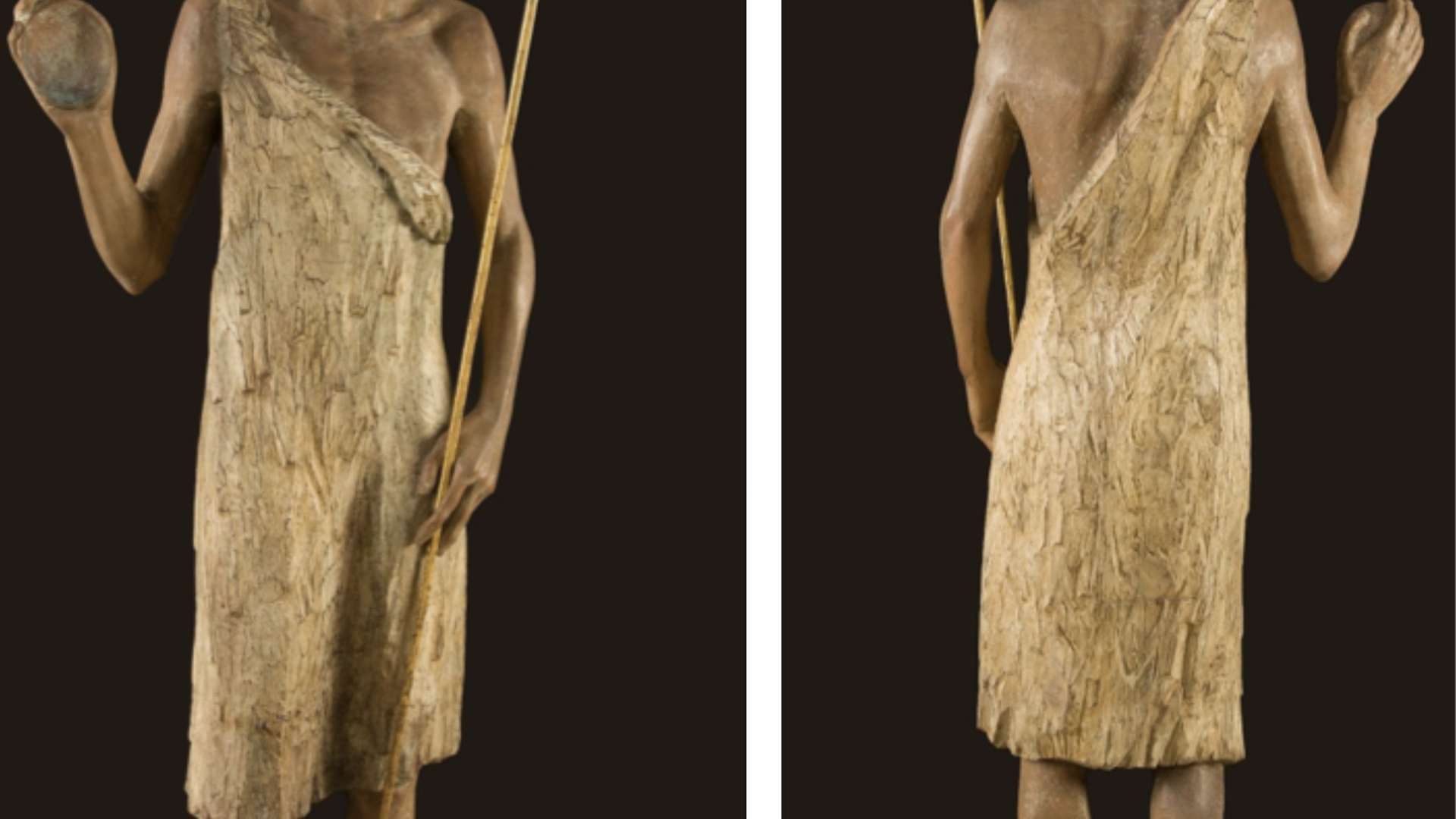
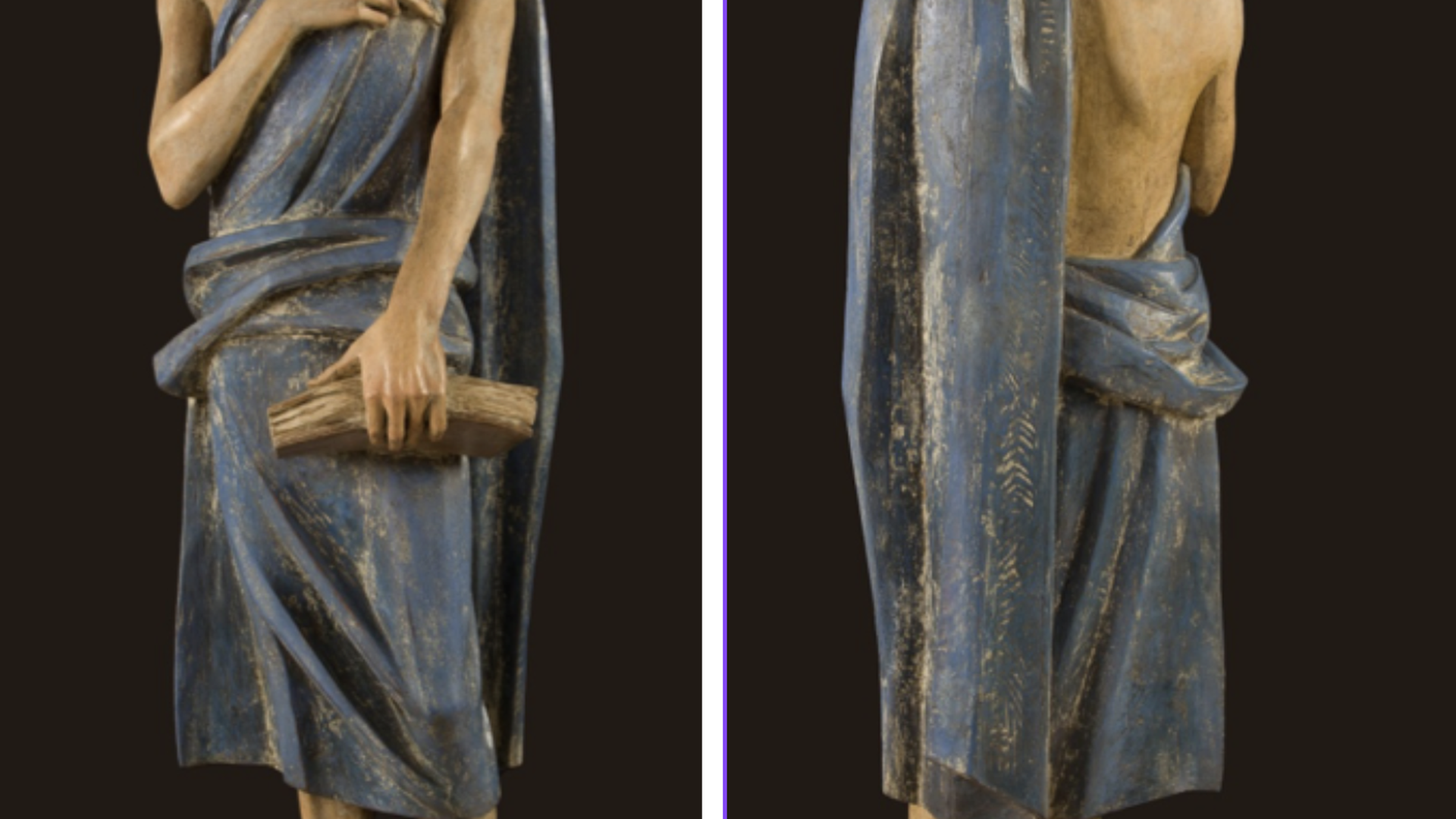
Restorer Stefania Colesanti, after cleaning and plastering, completed the restoration of the sculpture of St. John the Baptist. At the same time, the Scientific Research Laboratory carried out sampling of the paint film. Soon, the Photographic Laboratory will carry out photographic documentation of the work during the restoration.
As for the sculpture of St. John the Evangelist, the Scientific Research Laboratory has carried out some sampling and the restorer is in the process of cleaning the work.
Wooden restoration
The statues appear to have been made of stone pine wood, using a single piece of wood carved on the back for the body (arms excluded), to make the piece lighter and to diminish deformations and cracks in the wood.
After inspecting and, where necessary, consolidating the pictorial surface preparation, the restorer consolidated the wood through infiltrations along the cracks with bi-component putty. This operation will allow the restorer to work on a sufficiently solid support during the restoration process, with the addition of balsa wood inserts.
Wooden Statues of St. John the Baptist and St. John the Evangelist Restoration Update
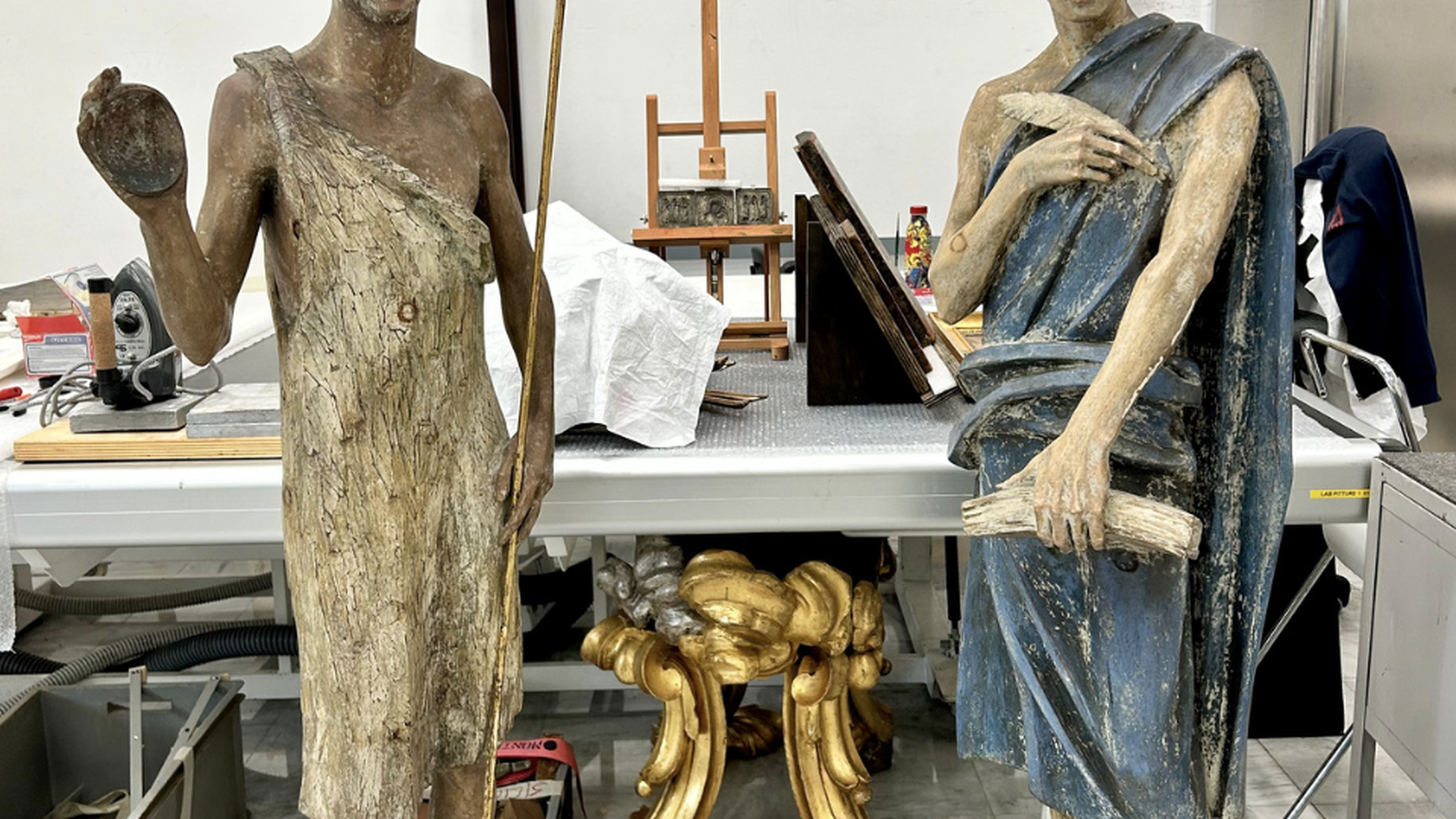
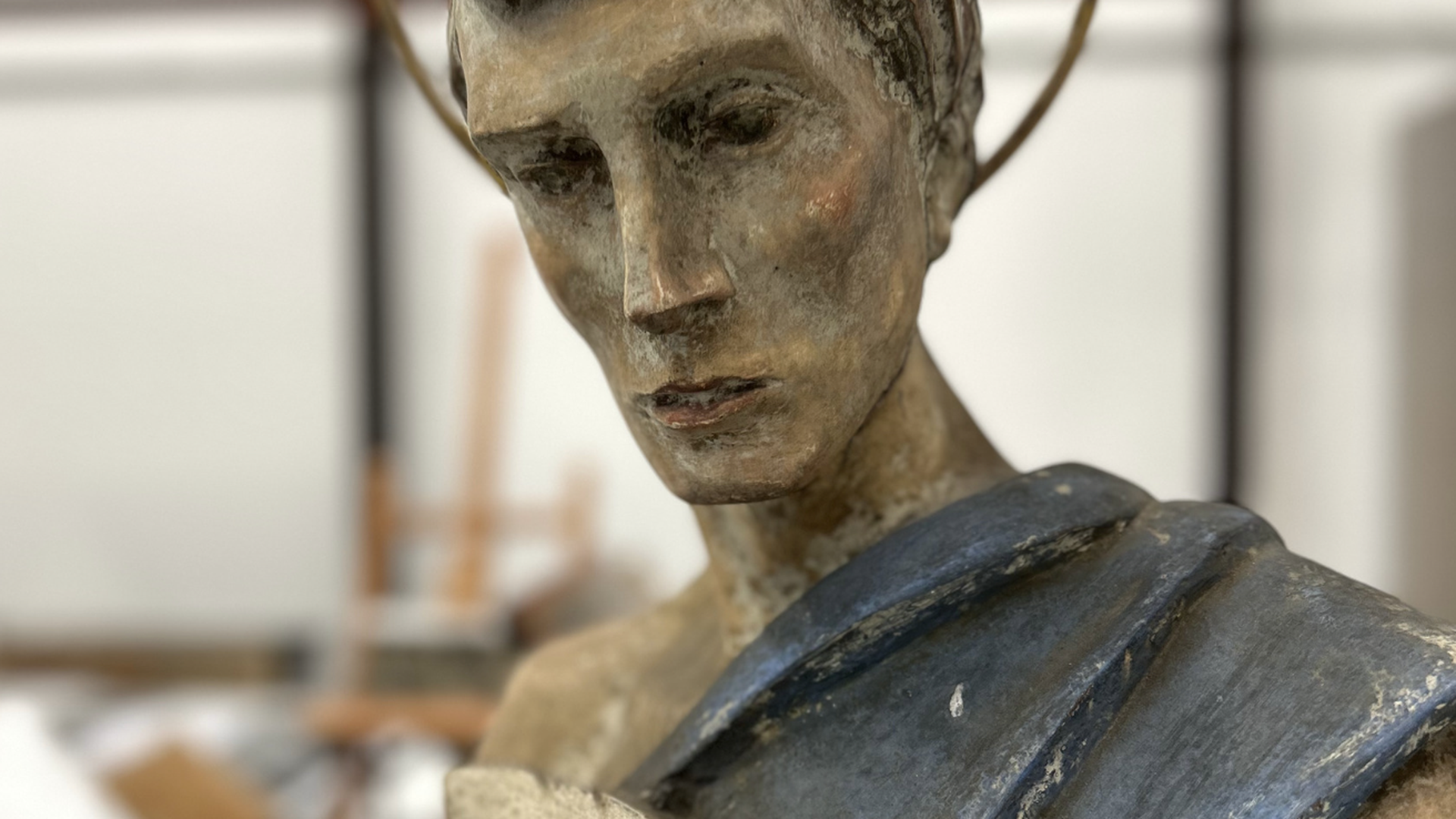

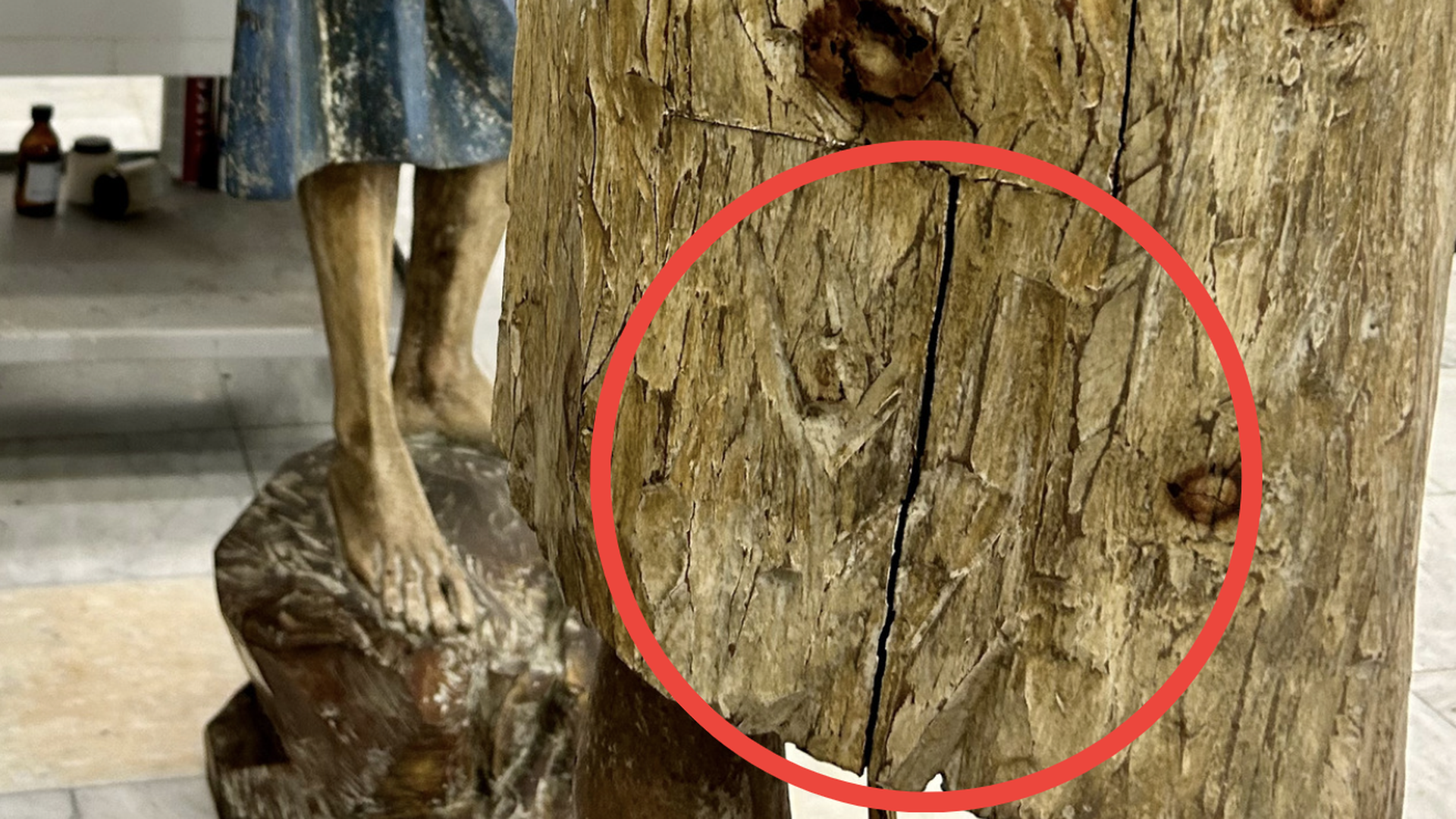
ABOUT THE STATUES
The two figures stand out as severe, angular, essential, and almost consumed by their mystical vocation. They are ascetic in one case and theological in the other. In particular, the areas related to themes and subjects of the Christian tradition have been the privileged grounds of this attitude that seeks, in comparison with the past, new expressive and formal possibilities.
It is not by chance that an interesting attributive story characterized part of their existence. They were once old inventories of the Museums because the two sculptures appeared as anonymous works of the fifteenth century.
Their antiquated executive technique uses cirmolo wood (Swiss stone pine) to create the pieces. Links have been in development from twentieth-century citations to identify the authorship. At the moment, the author remains anonymous, but probably thanks to future restorations and a documentary survey, it will be possible to recover his identity.
STATE OF PRESERVATION
The deep lesions are damaging the two artworks. In St. John the Baptist, restorers found lesions on the back, in various parts of the shoulders, the right arm, and the base. In Saint John, restorers observed more lesions on the right cheek. There are also many abrasions, color losses, gaps, and scratches.
The pictorial surface has a layer of dirt that altered the original color, and multiple dark spots cause aesthetic damages. Restorers assumed that internal metal elements from the execution phase oxidized over time (rust) and stained the preparation and pictorial layer.
RESTORATION PROCEDURES
The anoxic treatment of the two sculptures will precede any intervention.
Then, the Scientific Research Laboratory will need to carry out an X-ray examination (at least 30 X-ray images for each statue) to understand the internal structure, the presence of metallic elements, how many pieces of wood compose the two artworks, and how the sculptures are assembled.
Next, the Lab will perform a pigment analysis to determine the dating of the two sculptures, scanning the two cultures using the M6-XRF laser (machine images below).
Macro-X scanning fluorescence analysis (MA-XRF) is a technique for investigating historical artworks. Images of the distribution of elements acquired by this method make it possible to visualize hidden pictorial layers and, thus, to understand the artist's creative process and the artwork's conservation history.
Then infrared false color analysis, infrared Reflectography at 1000nm, and infrared Reflectography at 1900nm will be carried out.
For the restoration, the works need a safe intervention and consolidation of the support. Afterward, restorers will consolidate and re-attach the lifts of the pictorial film. Since this is a modern work, the choice of materials to use will be made after identifying the technique and materials previously used by the artist. The criterion of compatibility ensures that the behavior of the added restoration materials is similar to the original components. In this way, it is possible to avoid stress in both the structure and decorated part. Restorers will insert wooden wedges to fix the cracks and provide better adhesion to the fractured surfaces.
Once restorers understand the painting technique, they will decide which materials to reintegrate in the gaps and the abrasions. They will discuss the chromatic treatment of the wooden dowels inserted in the cracks. Also, they need to determine if they should apply a protective coating.

Wooden Statues of St. John the Baptist and St. John the Evangelist
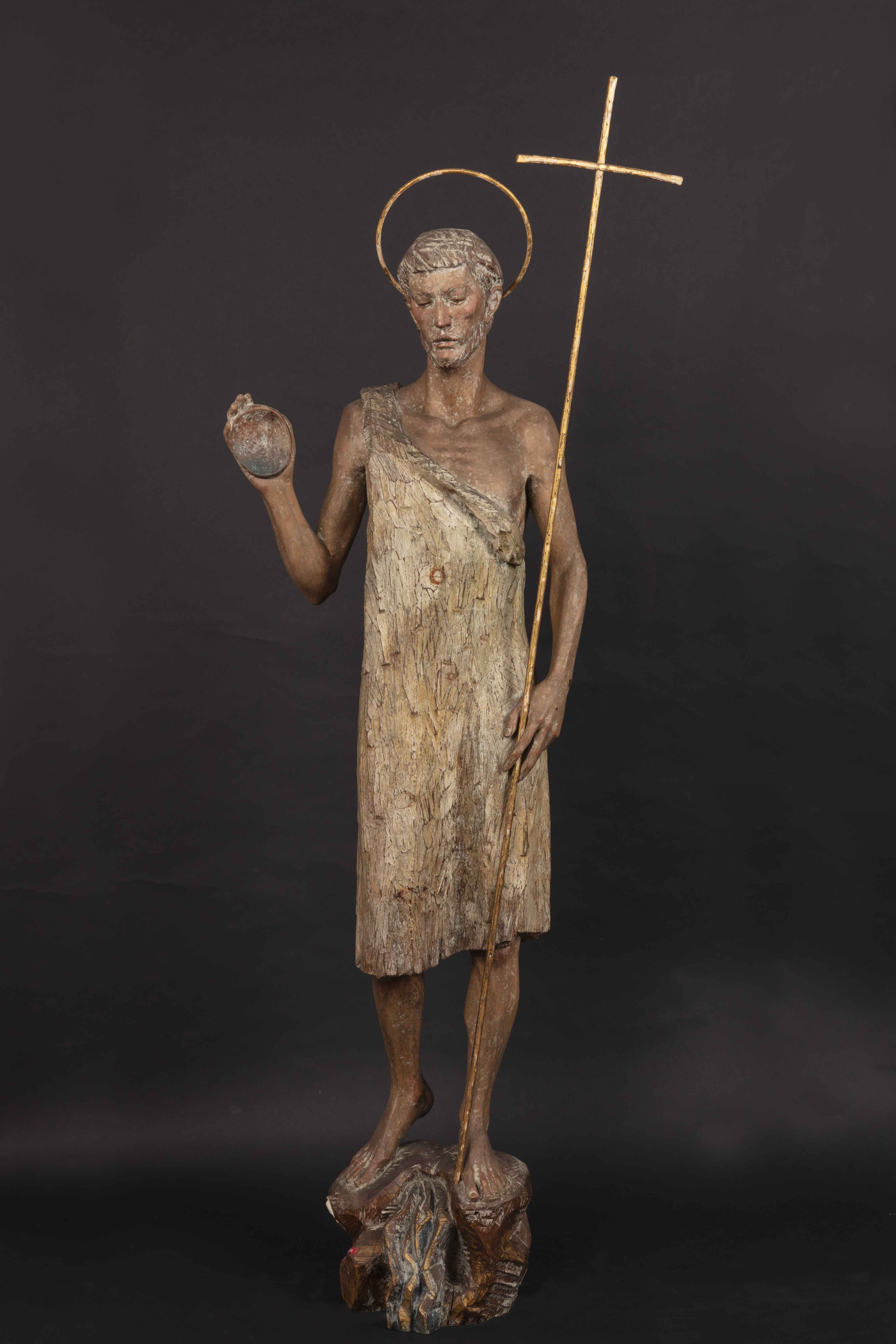
Details
Adopted by: The Florida Chapter
Patrons: Julie & Rob Reveley
Inventory: 44910, 44911
Artist: Unknown
Date: Early 20th century
Classification: Statues
Materials: Wood (maybe pine) painted in tempera
Dimensions: Height 160 cm
Department: XIX Century and Contemporary Art
Laboratory: Painting & Wood
Wishbook year: 2023
Description
MEDIUM PRIORITY PROJECT
The polychrome wood statues represent Saint John the Baptist and Saint John the Evangelist. They are now found in the Museums, but they came from the Tower of Saint John, a building of medieval origin located in the Vatican Gardens. The two sculptures are slightly less than the real height (about 160 cm each). They were on exhibition as furnishing elements inside the so-called “pope’s reception studio” located on the second floor. The statues were more than likely there since the early Sixties of the 20th century or when Pope St. John XXIII completely renovated the ancient medieval tower. St. John the Evangelist holds an open book and a goose feather. Saint John the Baptist, on the other hand, has the baptismal shell in his right hand, while the removable cross rests on his left arm, and he displays a delicate hand gesture. Also, a golden trickle of water from the Jordan flows from the suppedaneum in the center. Both figures have an elegant and thin halo in gilded metal, fixed with a pin on the back of the head, and the Baptist’s cross is gilded metal.
TOTAL COST: € 24.626,70 ($ 24,070.14)
Restoration Procedures
-
Anoxic treatment
-
Restoration and consolidation of the support
-
Wooden wedges to fix the cracks and provide better adhesion
-
Chromatic treatment of the wooden dowels
Media
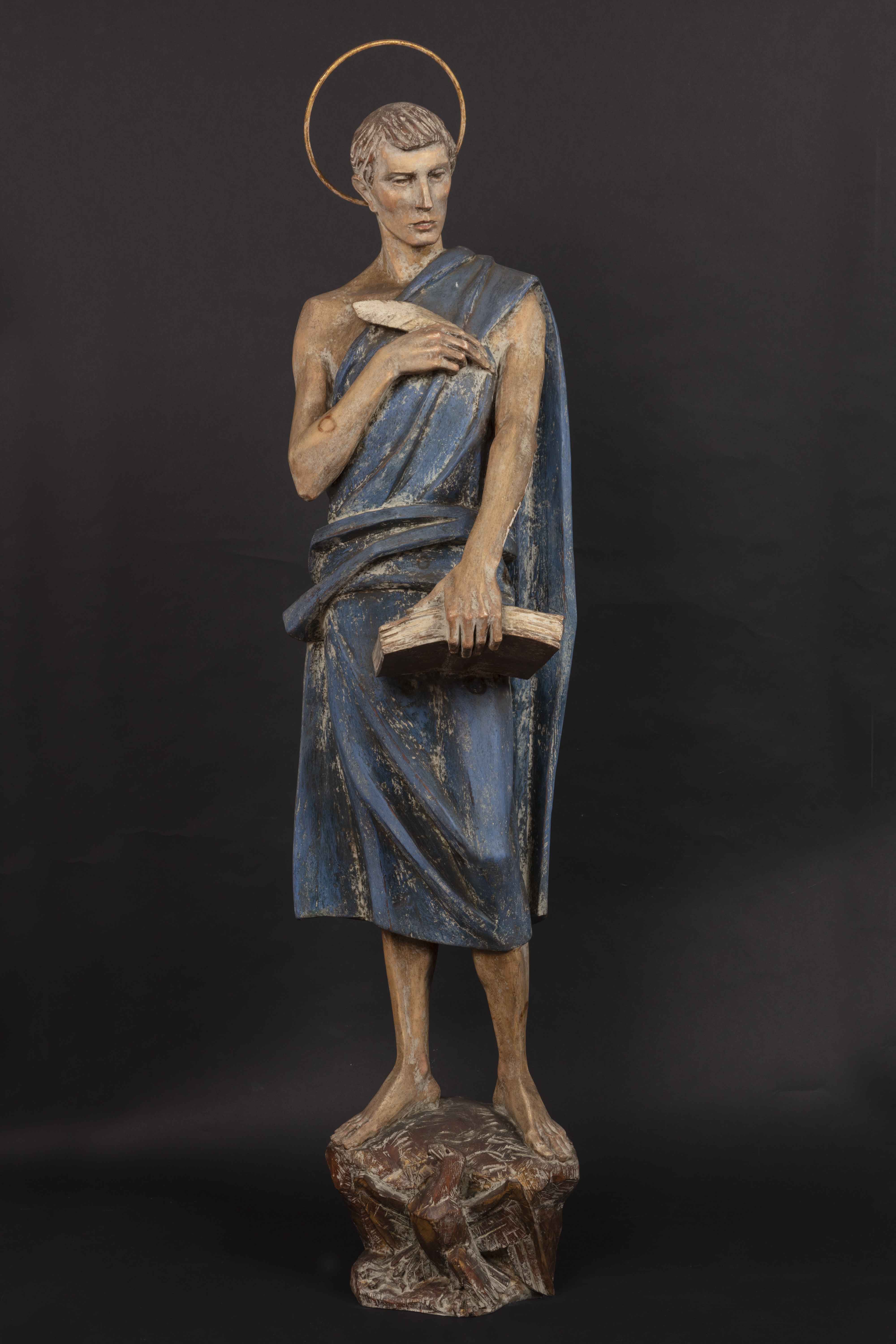
Wooden Statues of St. John the Evangelist - inv. 44911
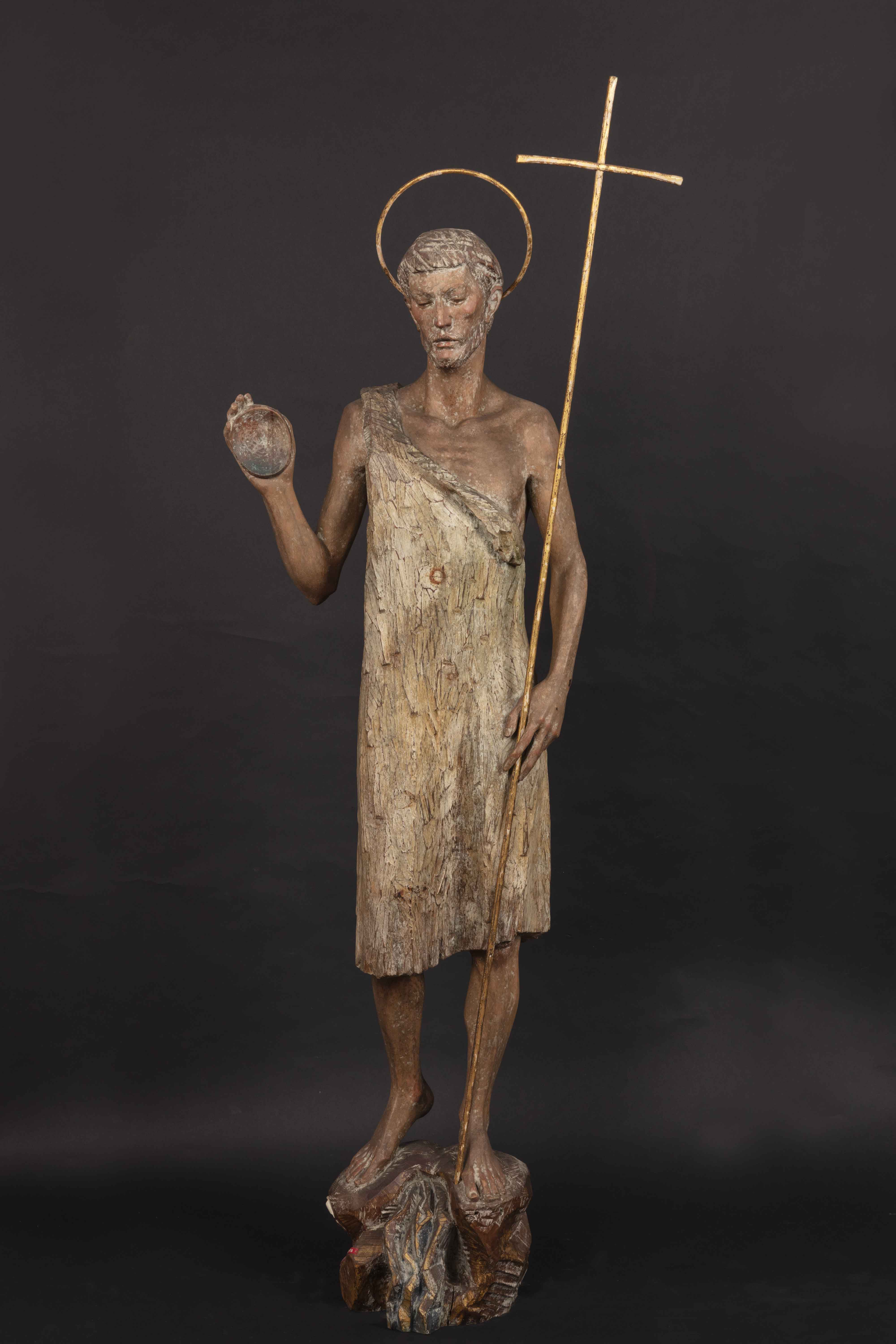
Wooden Statues of St. John the Baptist - inv. 44910
Restorations Update: Wooden Statues of St. John the Baptist and St. John the Evangelist - Final Restoration Report
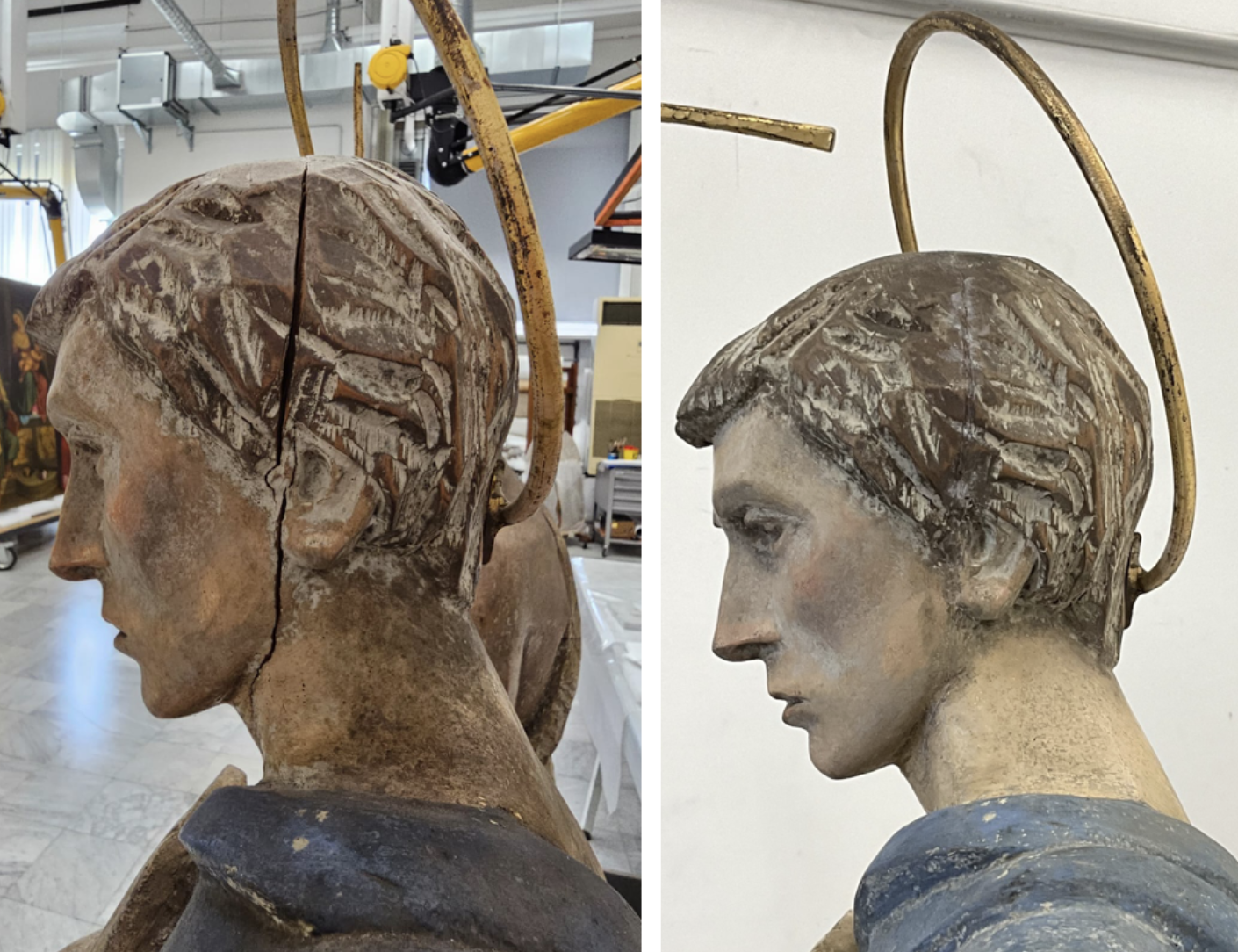
Restorer Stefania Colesanti, after cleaning and plastering, completed the restoration of the sculpture of St. John the Baptist. At the same time, the Scientific Research Laboratory carried out sampling of the paint film. Soon, the Photographic Laboratory will carry out photographic documentation of the work during the restoration.
As for the sculpture of St. John the Evangelist, the Scientific Research Laboratory has carried out some sampling and the restorer is in the process of cleaning the work.
Wooden restoration
The statues appear to have been made of stone pine wood, using a single piece of wood carved on the back for the body (arms excluded), to make the piece lighter and to diminish deformations and cracks in the wood.
After inspecting and, where necessary, consolidating the pictorial surface preparation, the restorer consolidated the wood through infiltrations along the cracks with bi-component putty. This operation will allow the restorer to work on a sufficiently solid support during the restoration process, with the addition of balsa wood inserts.
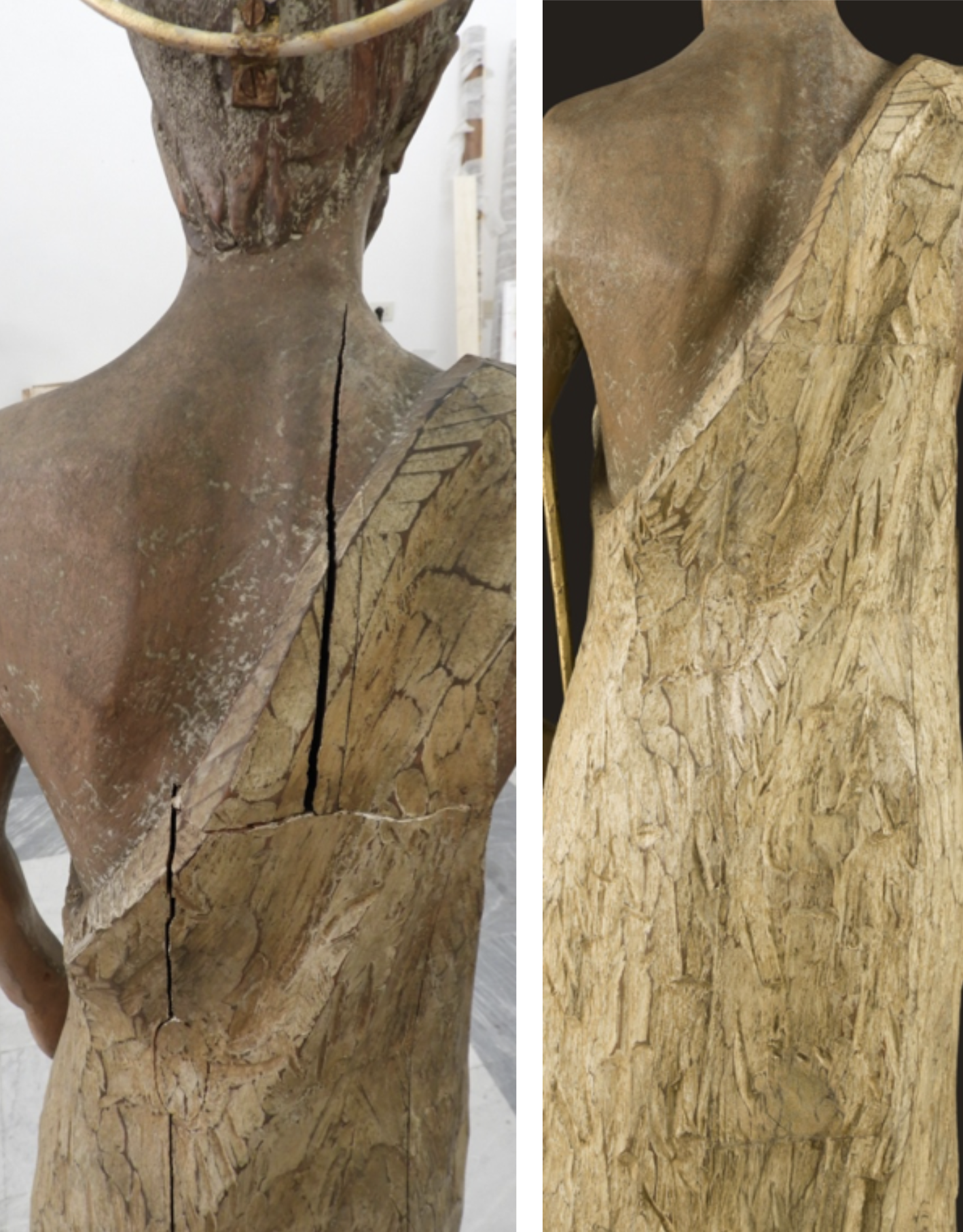
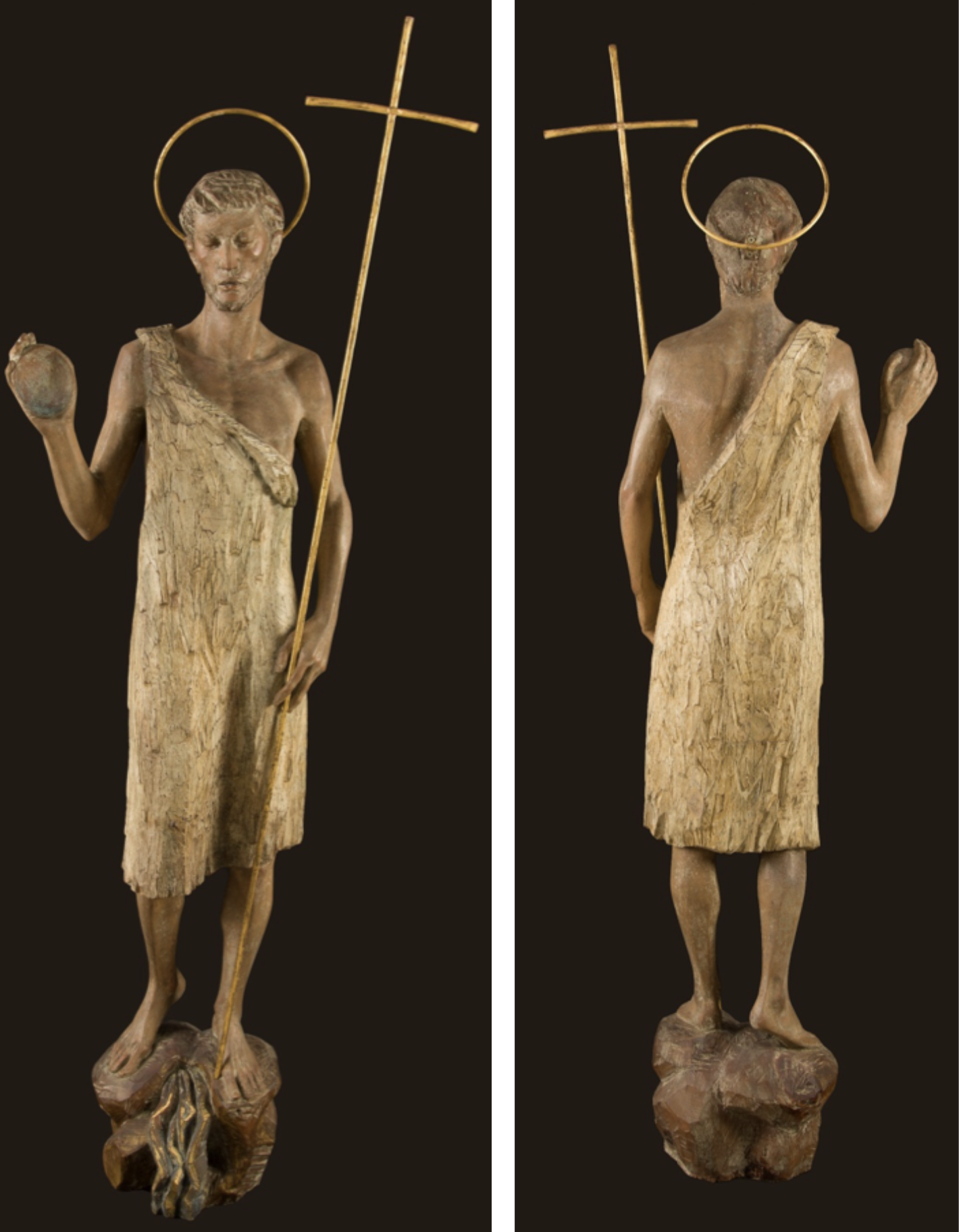
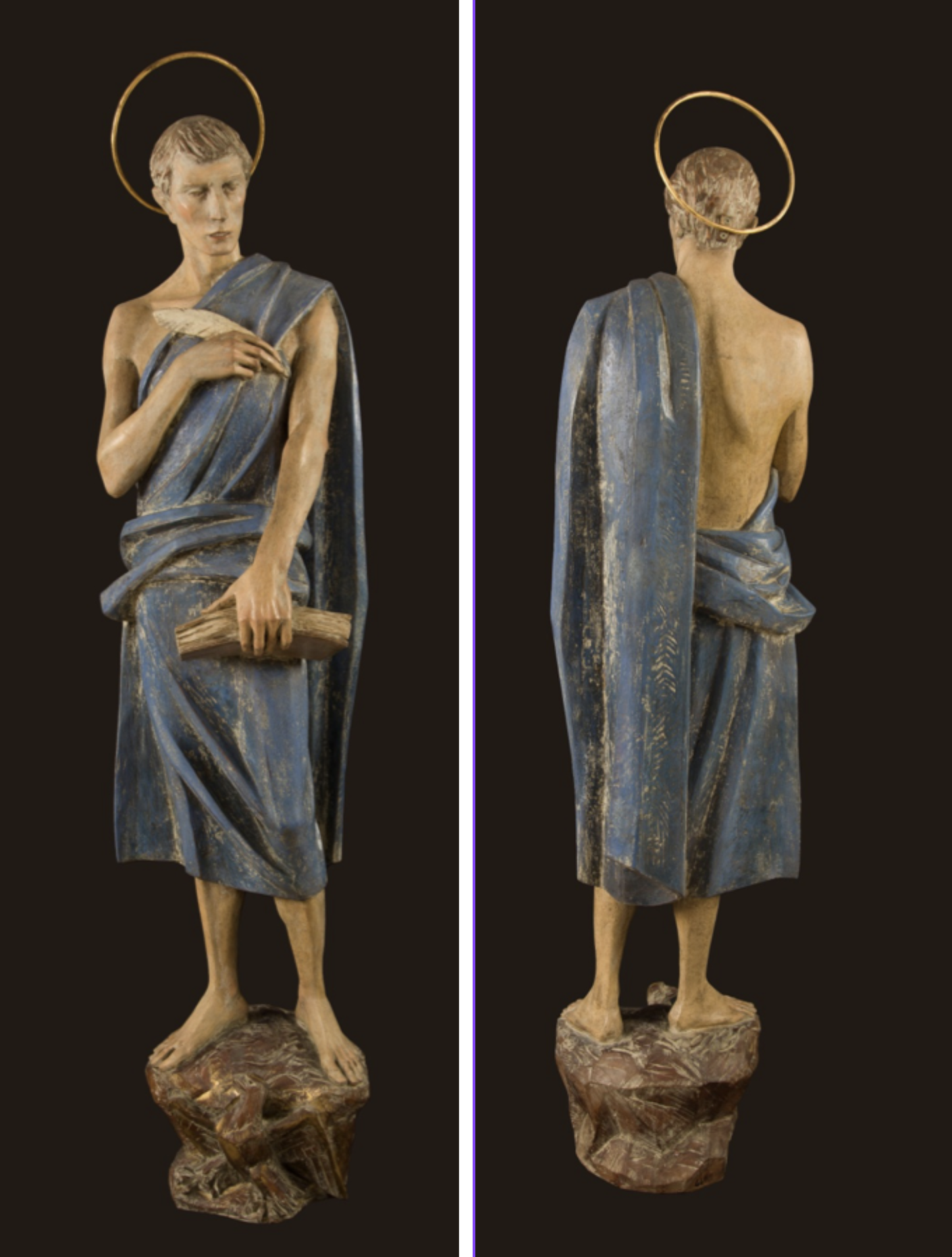
Restorations Update: Wooden Statues of St. John the Baptist and St. John the Evangelist Restoration Update
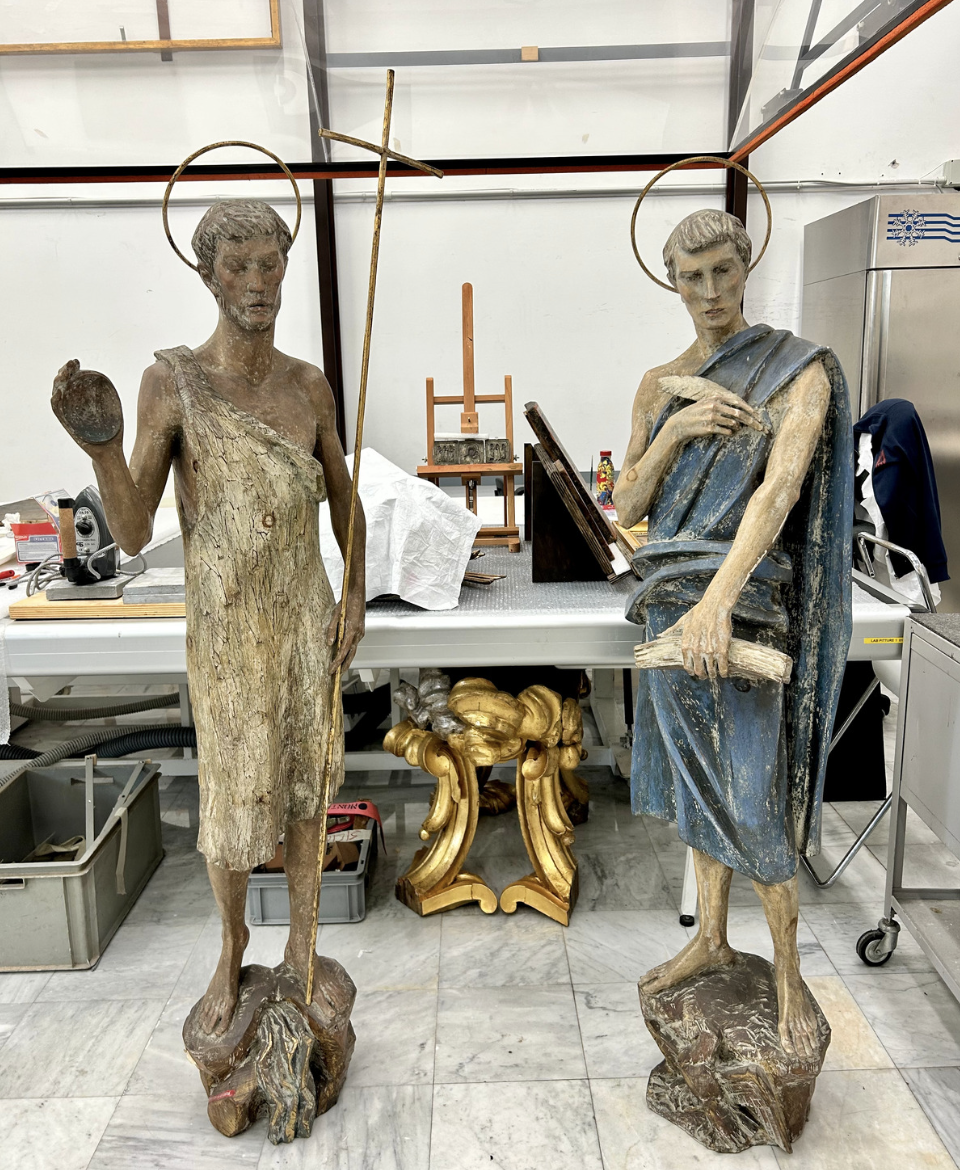
ABOUT THE STATUES
The two figures stand out as severe, angular, essential, and almost consumed by their mystical vocation. They are ascetic in one case and theological in the other. In particular, the areas related to themes and subjects of the Christian tradition have been the privileged grounds of this attitude that seeks, in comparison with the past, new expressive and formal possibilities.
It is not by chance that an interesting attributive story characterized part of their existence. They were once old inventories of the Museums because the two sculptures appeared as anonymous works of the fifteenth century.
Their antiquated executive technique uses cirmolo wood (Swiss stone pine) to create the pieces. Links have been in development from twentieth-century citations to identify the authorship. At the moment, the author remains anonymous, but probably thanks to future restorations and a documentary survey, it will be possible to recover his identity.
STATE OF PRESERVATION
The deep lesions are damaging the two artworks. In St. John the Baptist, restorers found lesions on the back, in various parts of the shoulders, the right arm, and the base. In Saint John, restorers observed more lesions on the right cheek. There are also many abrasions, color losses, gaps, and scratches.
The pictorial surface has a layer of dirt that altered the original color, and multiple dark spots cause aesthetic damages. Restorers assumed that internal metal elements from the execution phase oxidized over time (rust) and stained the preparation and pictorial layer.
RESTORATION PROCEDURES
The anoxic treatment of the two sculptures will precede any intervention.
Then, the Scientific Research Laboratory will need to carry out an X-ray examination (at least 30 X-ray images for each statue) to understand the internal structure, the presence of metallic elements, how many pieces of wood compose the two artworks, and how the sculptures are assembled.
Next, the Lab will perform a pigment analysis to determine the dating of the two sculptures, scanning the two cultures using the M6-XRF laser (machine images below).
Macro-X scanning fluorescence analysis (MA-XRF) is a technique for investigating historical artworks. Images of the distribution of elements acquired by this method make it possible to visualize hidden pictorial layers and, thus, to understand the artist's creative process and the artwork's conservation history.
Then infrared false color analysis, infrared Reflectography at 1000nm, and infrared Reflectography at 1900nm will be carried out.
For the restoration, the works need a safe intervention and consolidation of the support. Afterward, restorers will consolidate and re-attach the lifts of the pictorial film. Since this is a modern work, the choice of materials to use will be made after identifying the technique and materials previously used by the artist. The criterion of compatibility ensures that the behavior of the added restoration materials is similar to the original components. In this way, it is possible to avoid stress in both the structure and decorated part. Restorers will insert wooden wedges to fix the cracks and provide better adhesion to the fractured surfaces.
Once restorers understand the painting technique, they will decide which materials to reintegrate in the gaps and the abrasions. They will discuss the chromatic treatment of the wooden dowels inserted in the cracks. Also, they need to determine if they should apply a protective coating.
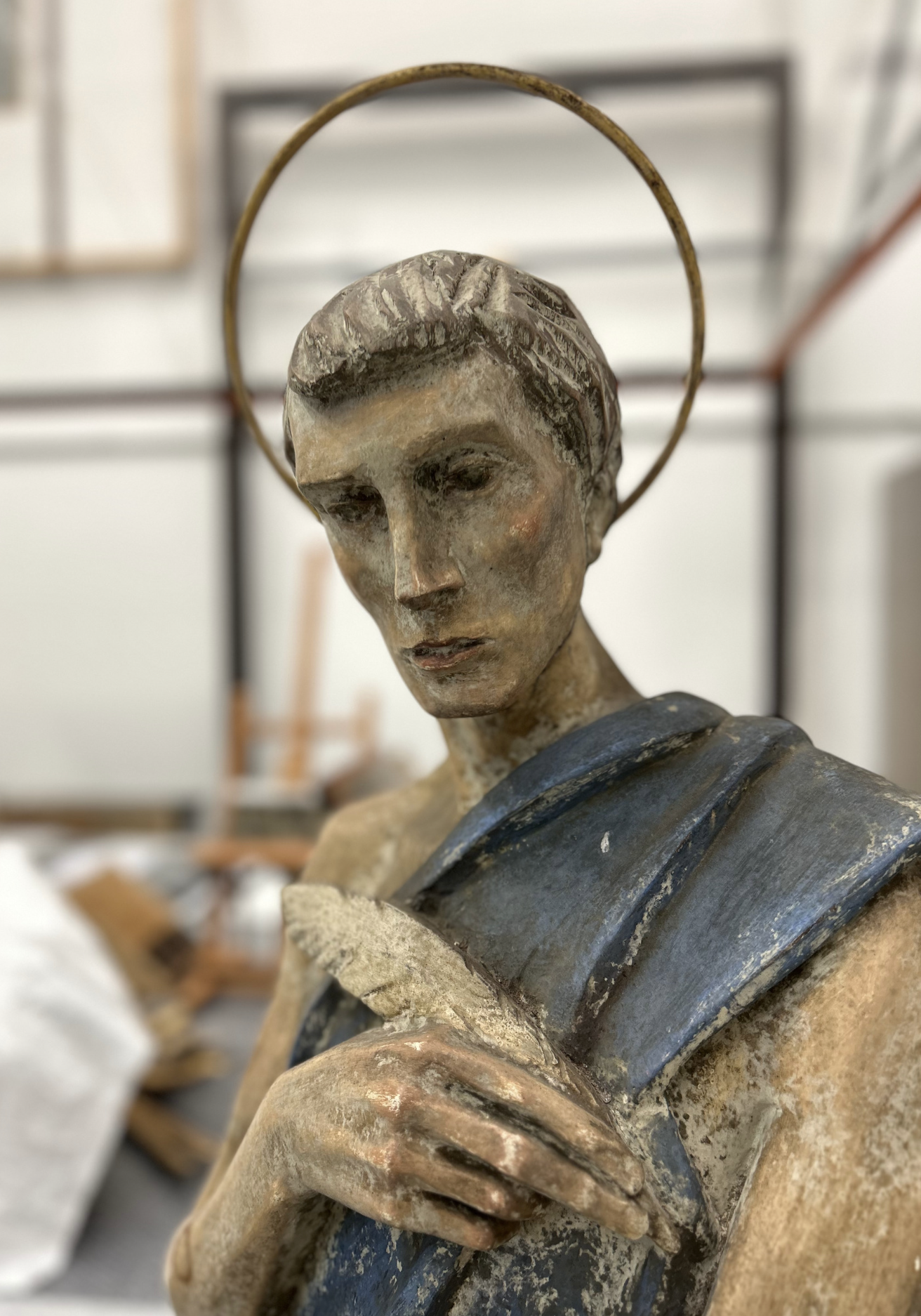
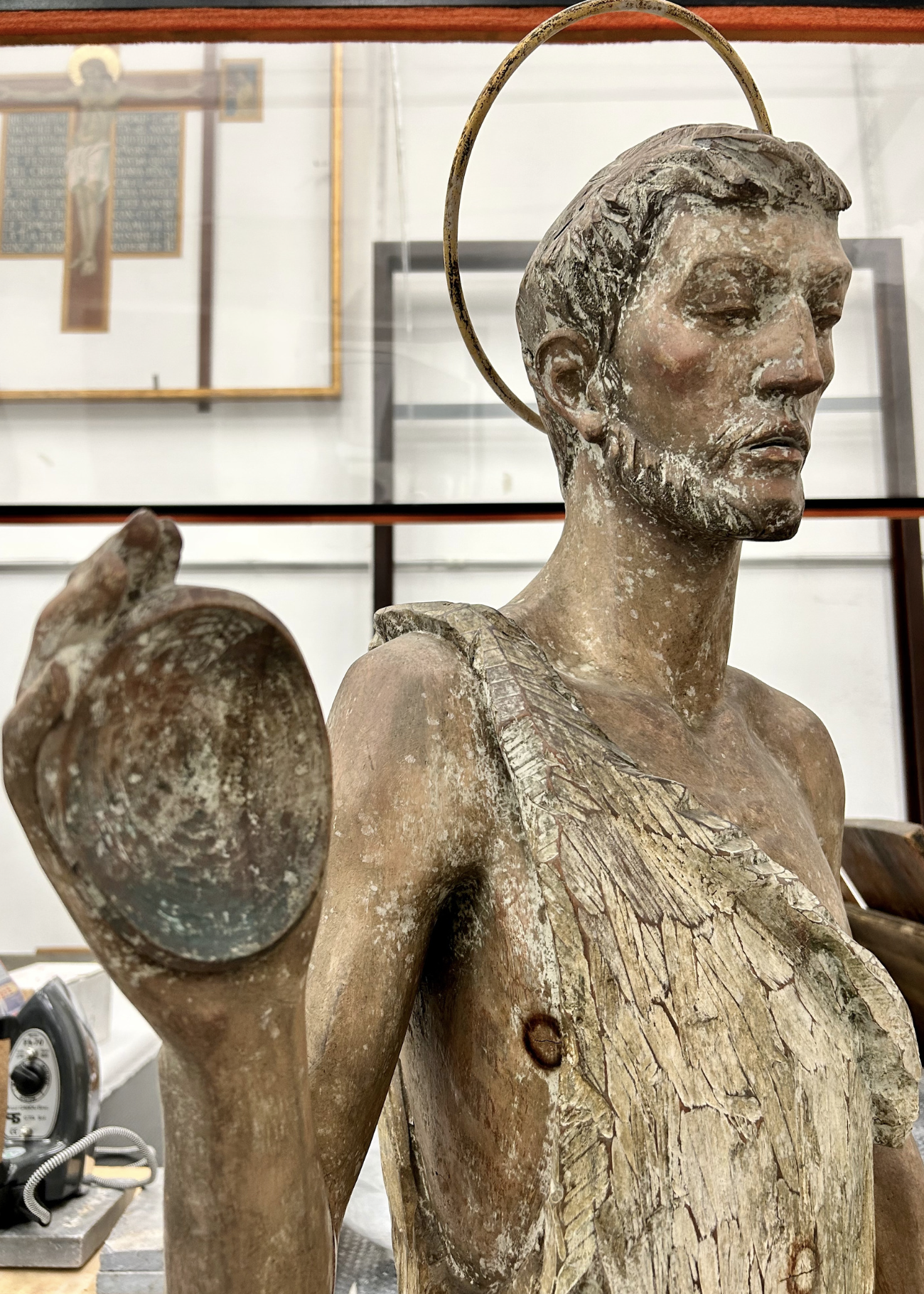
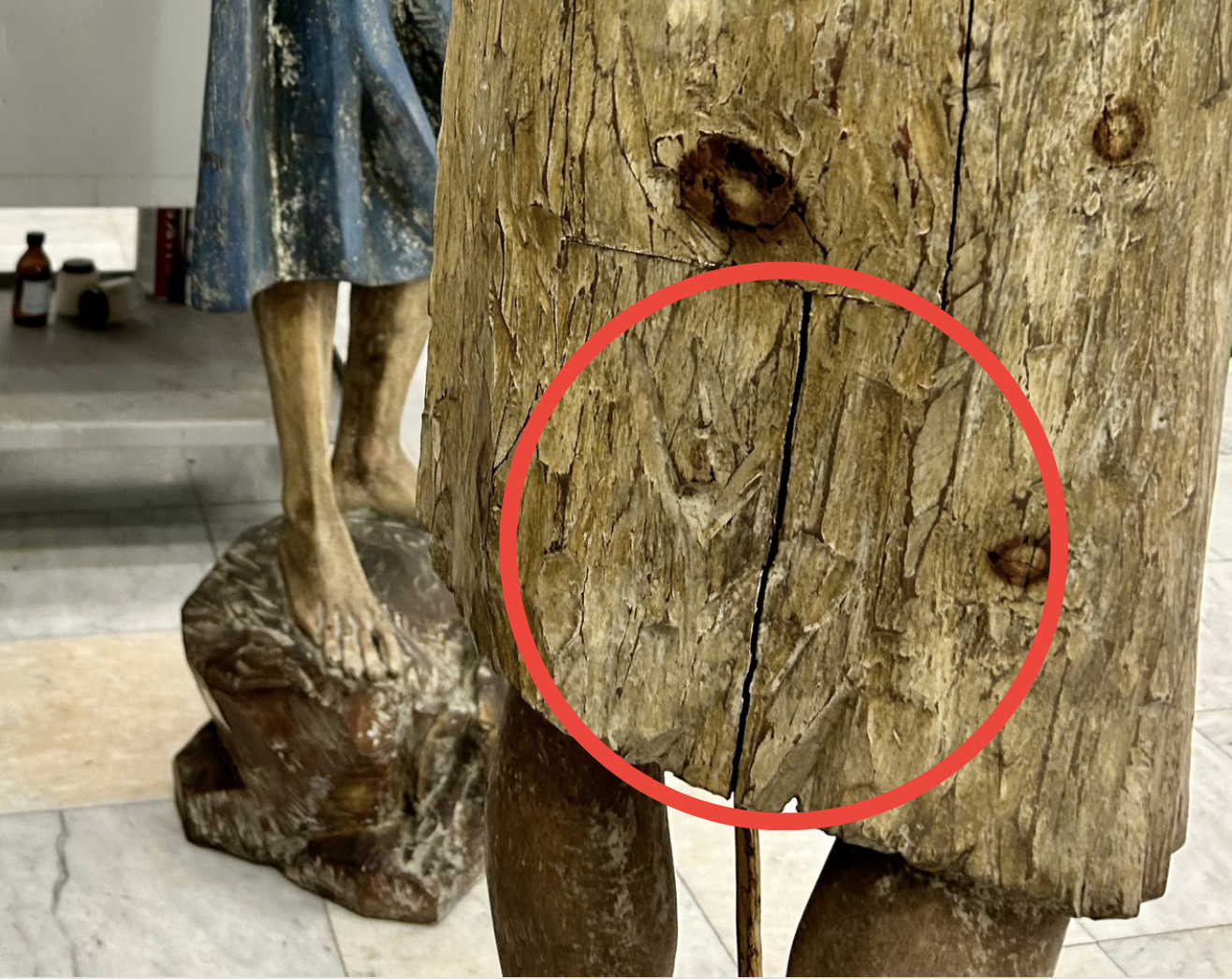

© 2025 Patrons of the Arts
in the Vatican Museums
Vatican Museums V-00120,
Vatican City State (Europe)
+39 0669864499
